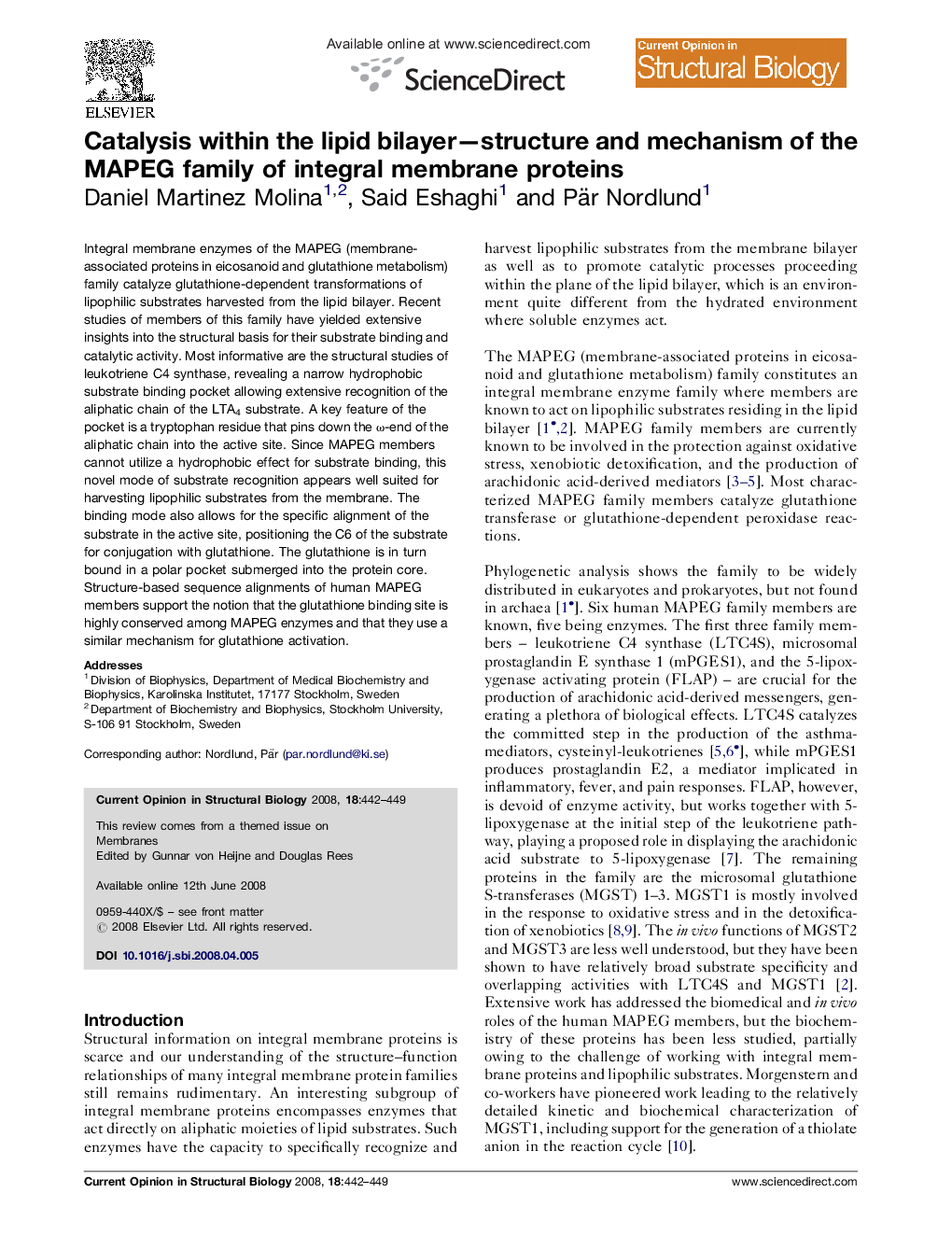| Article ID | Journal | Published Year | Pages | File Type |
|---|---|---|---|---|
| 1979667 | Current Opinion in Structural Biology | 2008 | 8 Pages |
Abstract
Integral membrane enzymes of the MAPEG (membrane-associated proteins in eicosanoid and glutathione metabolism) family catalyze glutathione-dependent transformations of lipophilic substrates harvested from the lipid bilayer. Recent studies of members of this family have yielded extensive insights into the structural basis for their substrate binding and catalytic activity. Most informative are the structural studies of leukotriene C4 synthase, revealing a narrow hydrophobic substrate binding pocket allowing extensive recognition of the aliphatic chain of the LTA4 substrate. A key feature of the pocket is a tryptophan residue that pins down the Ï-end of the aliphatic chain into the active site. Since MAPEG members cannot utilize a hydrophobic effect for substrate binding, this novel mode of substrate recognition appears well suited for harvesting lipophilic substrates from the membrane. The binding mode also allows for the specific alignment of the substrate in the active site, positioning the C6 of the substrate for conjugation with glutathione. The glutathione is in turn bound in a polar pocket submerged into the protein core. Structure-based sequence alignments of human MAPEG members support the notion that the glutathione binding site is highly conserved among MAPEG enzymes and that they use a similar mechanism for glutathione activation.
Related Topics
Life Sciences
Biochemistry, Genetics and Molecular Biology
Biochemistry
Authors
Daniel Martinez Molina, Said Eshaghi, Pär Nordlund,
